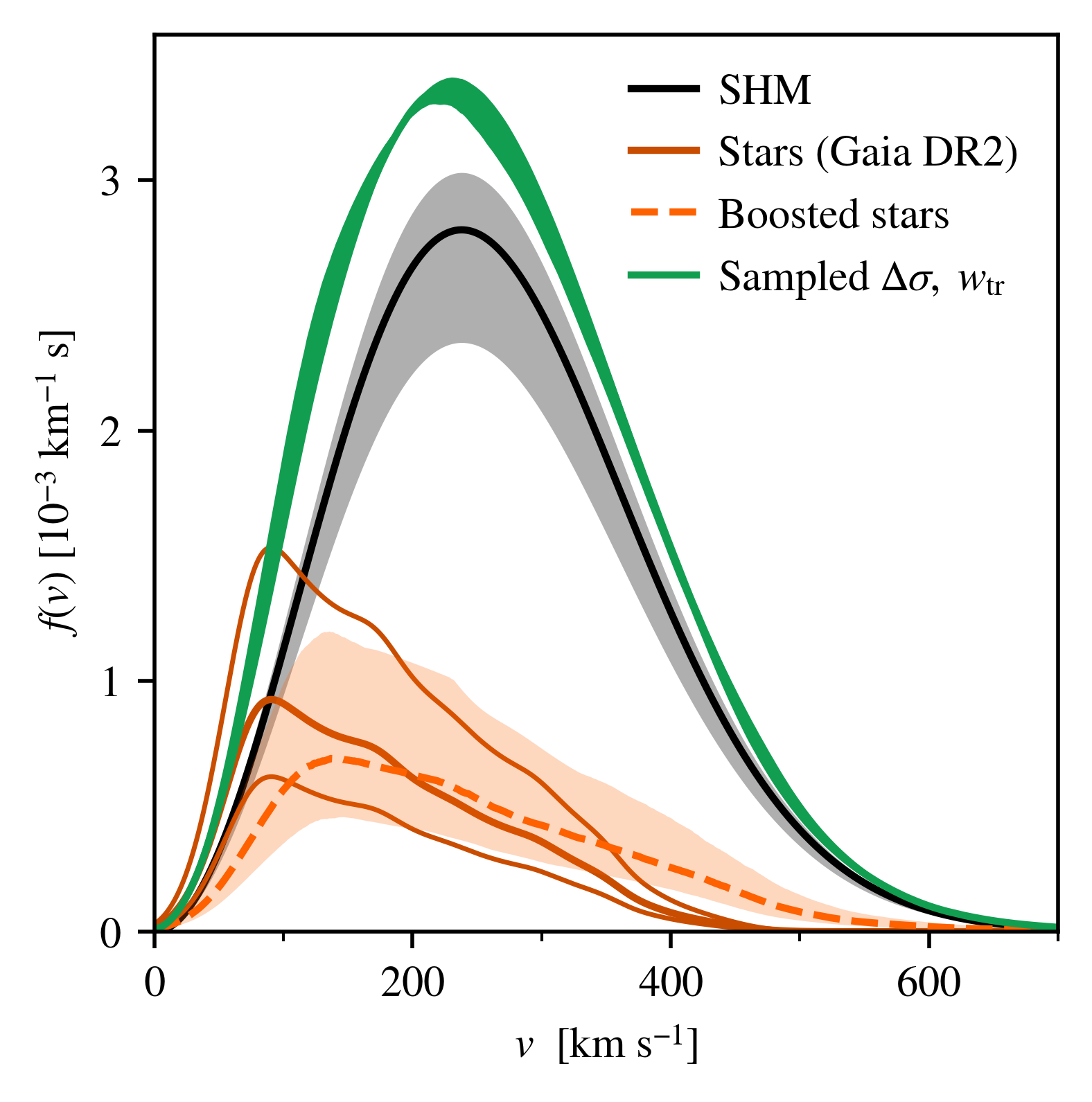arXiv:2510.21914, to submit to Astrophys. J.
Data available on GitHub
The dark matter flux in a direct detection experiment depends on its local speed distribution. This distribution has been inferred from simulations of Milky Way–like galaxies, but such models serve only as proxies given that no simulation directly captures the detailed evolution of our own Galaxy. This motivates alternative approaches which obtain this distribution directly from observations. In this work, we utilize 98 Milky Way analogues from the TNG50 simulation to develop and validate a procedure for inferring the dark matter speed distribution using the kinematics of nearby stars. We find that the dark matter that originated from old mergers, plus that from recent non-luminous accretions, is well described by a Maxwell–Boltzmann speed distribution centered at the local standard-of-rest velocity. Meanwhile, recently accreted dark matter from massive mergers has speeds that can be traced from the associated stellar debris of these events. The stellar populations systematically underestimate the velocity dispersion of their dark matter counterparts, but a simple kinematic boost brings the two into good alignment. Using the TNG50 host galaxies, we demonstrate that combining these two contributions provides an accurate reconstruction of the local dark matter speeds. As an application of the procedure to our own Galaxy, we utilize stellar kinematic data from Gaia to quantify how the dark matter remnants from the Milky Way’s last major merger impact its speed distribution in the Solar neighborhood.
